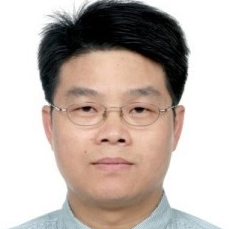Advance on Net Surface Radiation Inversion Using Remote Sensing Technology
A special issue of Remote Sensing (ISSN 2072-4292). This special issue belongs to the section "Atmospheric Remote Sensing".
Deadline for manuscript submissions: closed (15 October 2022) | Viewed by 16957
Special Issue Editors
2. State Key Laboratory of Resources and Environment Information System, Institute of Geographic Sciences and Natural Resources Research, Chinese Academy of Sciences, Beijing 100101, China
Interests: retrieval and validation of land surface temperature/emissivity; retrieval and validation of net surface radiation; radiative transfer modeling; quantitative estimation of land surface variables from middle infrared data; hyperspectral thermal infrared data analysis
Special Issues, Collections and Topics in MDPI journals
Interests: thermal infrared remote sensing; land surface temperature; land surface emissivity; radiative transfer modeling
Special Issues, Collections and Topics in MDPI journals
Special Issue Information
Dear Colleagues,
Net surface radiation (NSR), consisting of net surface shortwave radiation (NSSR) and net surface longwave radiation (NSLR), is the driving force for the process of the surface energy balance and land–atmosphere interactions, and is vitally important for various applications including climate studies, agricultural meteorology, and regional and global land surface models studies.
Up to now, many efforts have been made to estimate NSR using remote sensing data, and many parameterization schemes have been successfully developed to estimate NSR, NSSR, and NSLR from satellite-based data. However, it should be pointed out that most of the methods are just for the estimations of NSR, NSSR, and NSLR for clear-sky days. The estimations of above variables over cloudy skies are still problematic.
Note that the daily average net surface radiation (DANSR) has more meaning than instantaneous NSR for atmospheric and hydrologic modeling and the estimate of evapotranspiration from remotely sensed data. Currently, estimation of DANSR is usually using one single instantaneous NSR with a sinusoidal model deduced from the diurnal cycle of surface temperature for clear days. This clear-based sinusoidal approximation model may not accurately capture the diurnal variation of NSR for days when cloud cover was present during a portion or entire day.
This Special Issue is being planned to focus on the latest advance on retrieval and validation of NSR, NSSR, and NSLR from space measurements and grow interest in estimations and analyses of those parameters.
Dr. Bo-Hui Tang
Dr. Si-Bo Duan
Dr. Liang Huang
Guest Editors
Manuscript Submission Information
Manuscripts should be submitted online at www.mdpi.com by registering and logging in to this website. Once you are registered, click here to go to the submission form. Manuscripts can be submitted until the deadline. All submissions that pass pre-check are peer-reviewed. Accepted papers will be published continuously in the journal (as soon as accepted) and will be listed together on the special issue website. Research articles, review articles as well as short communications are invited. For planned papers, a title and short abstract (about 100 words) can be sent to the Editorial Office for announcement on this website.
Submitted manuscripts should not have been published previously, nor be under consideration for publication elsewhere (except conference proceedings papers). All manuscripts are thoroughly refereed through a single-blind peer-review process. A guide for authors and other relevant information for submission of manuscripts is available on the Instructions for Authors page. Remote Sensing is an international peer-reviewed open access semimonthly journal published by MDPI.
Please visit the Instructions for Authors page before submitting a manuscript. The Article Processing Charge (APC) for publication in this open access journal is 2700 CHF (Swiss Francs). Submitted papers should be well formatted and use good English. Authors may use MDPI's English editing service prior to publication or during author revisions.
Keywords
- Net surface radiation (NSR)
- Net surface shortwave radiation
- Net surface longwave radiation
- Downwelling surface shortwave radiation
- Downwelling surface longwave radiation
- Upwelling surface longwave radiation
- Surface albedo
- Land surface temperature/emissivity
- NSR validation
- Daily net surface radiation







